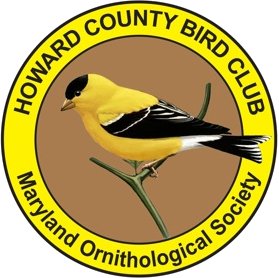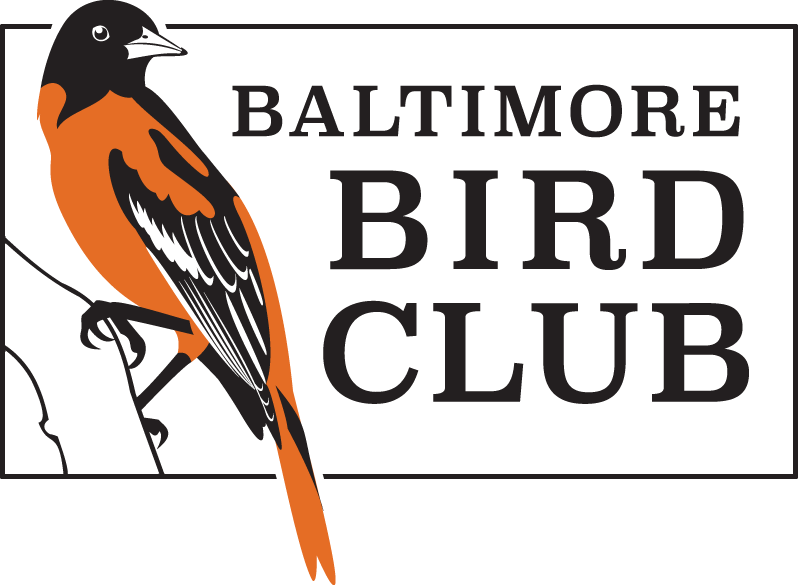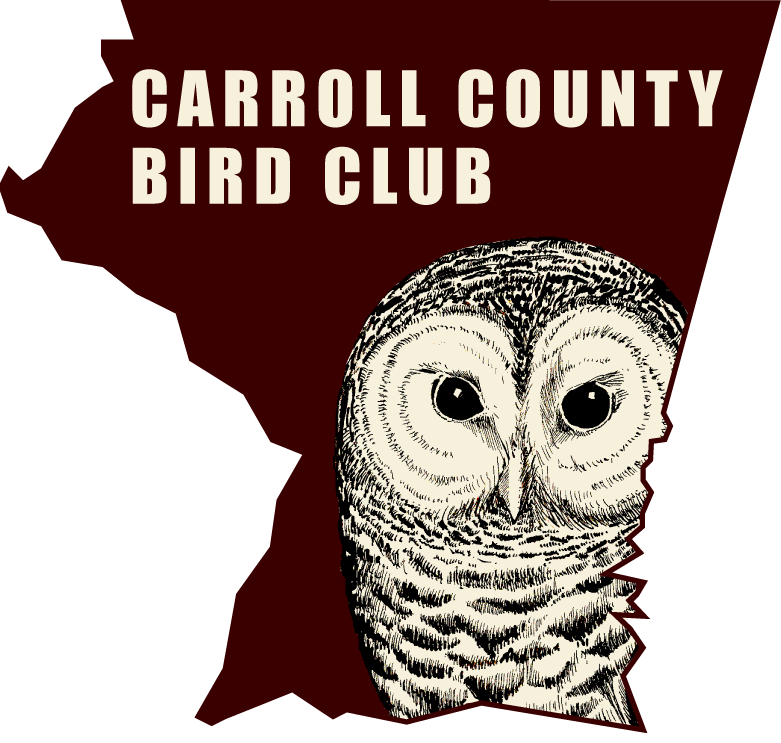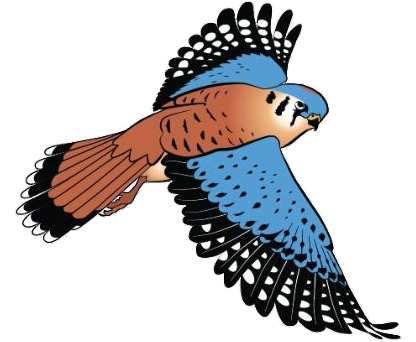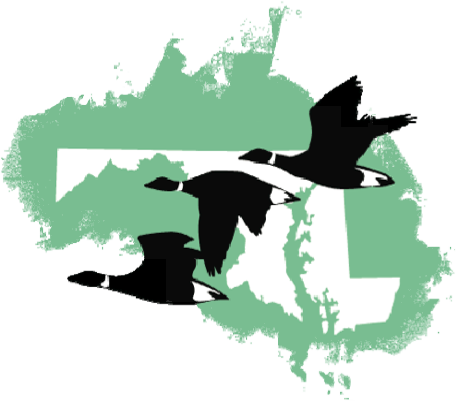Links
▶ WildlifeAuthority.com/links.htm + links.pdf
![]()
Download or view
this page in PDF.
Here are links to sites you might find interesting and useful.
Categories on this page:
- Birding
- Bird Info
- Specific Birds
- Wildlife Rescue
- Nature
Birding
Links to organizations and activities in which you can participate.
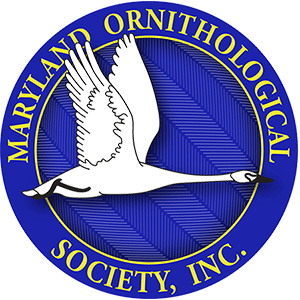 Maryland Ornithological Society (MOS)
Maryland Ornithological Society (MOS)The Maryland Ornithological Society (MOS) is a nonprofit, statewide organization of people who are interested in birds and nature. MOS promotes knowledge about our natural resources, and fosters its appreciation and conservation. The Society also maintains a system of sanctuaries to encourage the conservation of birds and bird habitat, and to help record and publish observations of bird life.
Birding activities, publications, and programs are available to members through the state organization or a local chapter, a few of which are listed below:
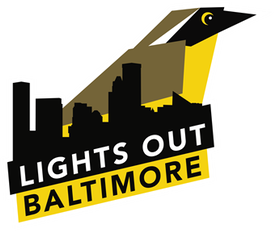 Lights Out Baltimore
Lights Out BaltimoreLights Out Baltimore (LOB) is a 501(c)(3) non-profit formed by a group of concerned birdwatchers in the Baltimore Bird Club, a chapter of Maryland Ornithological Society, who have seen firsthand the toll lights and windows play on birds. Our goal is to make Charm City safe for birds by:
- Turning off decorative lighting in the city during peak migration seasons, between the hours of 11 p.m. and 6 a.m.
Many birds migrate at night by navigation of the moon and stars. These birds become disoriented when flying over brightly lit buildings in city areas. Once the birds fly into the city confused by the lights, the urban environment can become a deadly trap.
- Advocating for bird-safe lighting and building design.
Day or night, buildings with clear glass or reflective glass cause birds to collide with the building, killing or injuring the birds. But there are design options that can help birds avoid trying to fly through clear glass or into a reflection. Learn about light pollution and bird-safe building and lighting practices.
What We Do
A core group of volunteers walks downtown Baltimore during fall and spring migrations to rescue injured birds from window collisions and collect dead birds. Injured ones are taken to Phoenix Wildlife Center, and dead ones are taken to the Smithsonian’s Museum of Natural History. Deceased birds are used in various cancer and aging researches conducted at Johns Hopkins University School of Medicine.
- Turning off decorative lighting in the city during peak migration seasons, between the hours of 11 p.m. and 6 a.m.
 eBird – Global Tools for Birders, Critical Data for Science
eBird – Global Tools for Birders, Critical Data for ScienceA local and international, real-time, online checklist program for the birding community to report and access information about birds.
- Keep track of your bird lists and compare with other eBirders.
- Explore interactive range maps by species or subspecies – zoom in for details.
- Find out what birds to expect throughout the year in a region or location. Monitor arrivals and departures for a country, state/province, county, or hotspot.
- Explore different metrics of species occurrence in a region or location.
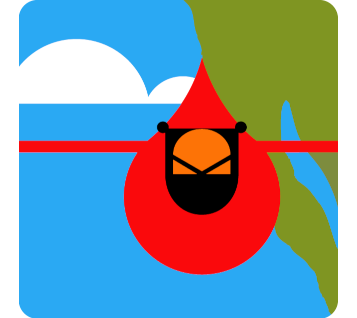 Great Backyard Bird Count
Great Backyard Bird CountAn annual four-day event (usually a Friday through Monday in mid-February) that engages bird watchers of all ages in counting birds to create a real-time snapshot of where the birds are.
Anyone can participate, from beginning bird watchers to experts.
These observations help scientists better understand global bird populations before one of their annual migrations.
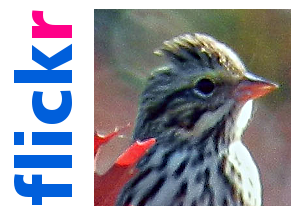 Maryland Birders (a Flickr group)
Maryland Birders (a Flickr group)Members can post their photos of birds seen in Maryland and the District of Columbia. A place for all styles of enjoying birds: from those “dawn to dusk birders” to the “armchair and tea” at the window bird lovers.
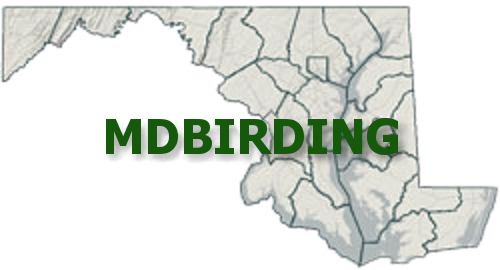 Maryland & DC Birding
Maryland & DC BirdingMDBirding is an open group for discussing the topics of birds and birding in Maryland and DC. Discussions range from backyard birds to regional rarities.
There are two main communication platforms for MDBirding:
 Google Group Email Listserv
Google Group Email Listserv
The listserv uses Google Groups to power the discussions. Members simply email the group, and the email is immediately broadcast to all 1000+ members. This has proven to be a great way to get the word out about an exciting rarity or to sum up a day of birding in the field.
 Facebook Group: MD Birding
Facebook Group: MD Birding
Many of the members of the Google Group are also on Facebook, and the atmosphere here is a little different. It’s much easier to post photos, ask for ID advice, or see if anyone wants to carpool or meet up for a day of birding. This group was created for bird enthusiasts of ALL skill levels and interests.
We encourage new members to join both groups to really get a sense of what Maryland & DC Birdng is all about!
 American Bird Conservancy
American Bird ConservancyThe American Bird Conservancy (ABC) mission is to conserve native birds and their habitats throughout the Americas. ABC acts across the full spectrum of threats to birds to safeguard the rarest bird species, restore habitats, and reduce threats, unifying and strengthening the bird conservation movement.
 American Birding Association
American Birding AssociationThe American Birding Association represents the North American birding community and supports birders through publications, conferences, workshops, tours, partnerships, and networks.
The ABA’s education programs promote birding skills, ornithological knowledge, and the development of a conservation ethic.
The ABA encourages birders to apply their skills to help conserve birds and their habitats, and we represent the interests of birders in planning and legislative arenas.
 Audubon
AudubonAudubon’s mission is to conserve and restore natural ecosystems, focusing on birds, other wildlife, and their habitats for the benefit of humanity and the earth’s biological diversity.
- Birding in Maryland
Maryland Birding Hotspots – Notwithstanding its small size and dense human population, Maryland encompasses enough diversity to make it one of the most rewarding birding destinations on the Atlantic Coast.
Local chapters:
- Birding in Maryland
Bird Info
Links to information about birds in general.
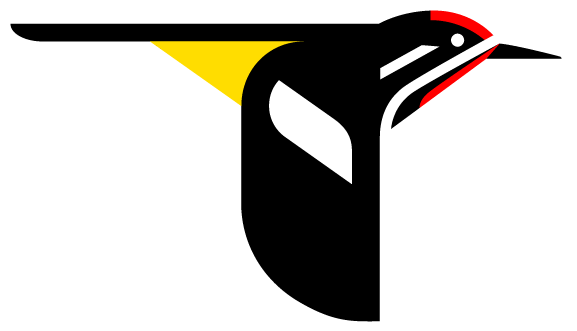 All About Birds
All About BirdsSearch for birds by name, taxonomy, shape, and find information about habitat, food, nesting, behavior, and conservation. Explore topics from science to art, to history, to birding ID skills, the Merlin Bird ID app, and more. From The Cornell Lab of Ornithology.
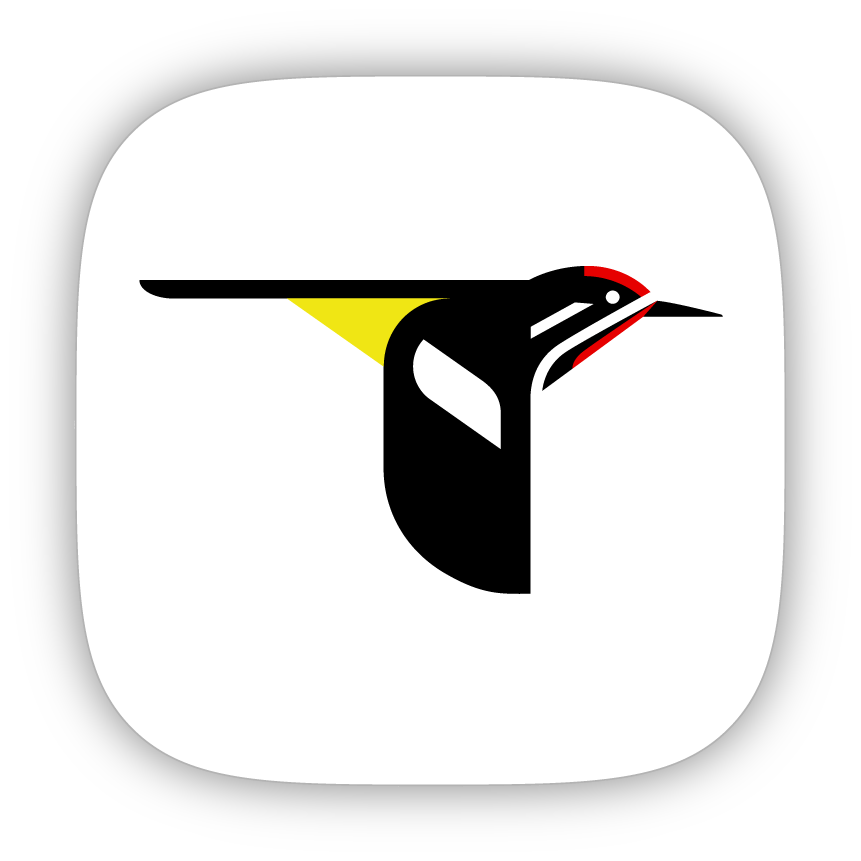
Merlin Bird ID app- Identify birds in your photos with a short list of possible matches.
- Identify bird songs and calls with real-time suggestions from what the app hears.
- Or answer a few simple questions about a bird you are trying to identify.
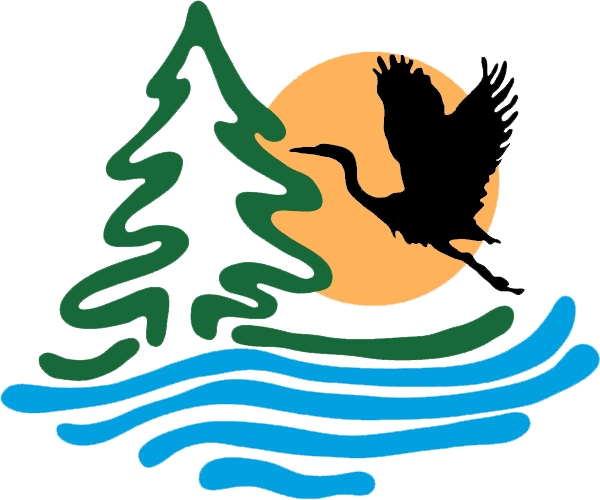 Maryland Birds – Maryland Department of Natural Resources: Maryland’s Wildlife Species
Maryland Birds – Maryland Department of Natural Resources: Maryland’s Wildlife Species-
Over 450 bird species have been documented in Maryland, and over half of these species have nested in the State. More than 100 species are considered vagrant or accidental in Maryland, having been found only once or a handful of times. About eleven species are extinct, extirpated from Maryland as breeding species, or have not been recorded as breeding in the state in recent years (ca. past 20 years) and may be extirpated.
- Quick Bird FAQ
- Bird Checklists
- Select Bird Factsheets
- Additional Birding Links
 BirdCast
BirdCastBirdCast develops and maintains tools that predict and monitor bird migration. These include:
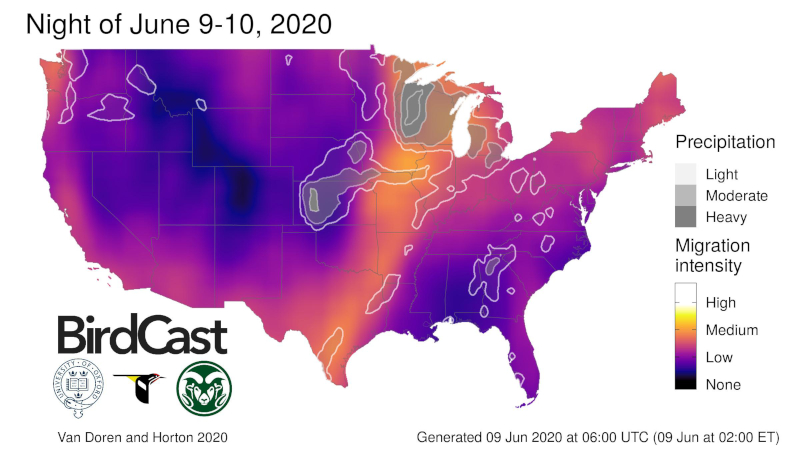
- Live bird migration maps that show where migration is occurring in real-time.
- Bird migration forecast maps that predict where and when bird migration will occur.
- Local bird migration alerts.
 Bird Banding Laboratory
Bird Banding Laboratory The Bird Banding Laboratory (BBL) is an integrated scientific program established in 1920 supporting the collection, archiving, management and dissemination of information from banded and marked birds in North America. This information is used to monitor the status and trends of resident and migratory bird populations.
The Bird Banding Laboratory (BBL) is an integrated scientific program established in 1920 supporting the collection, archiving, management and dissemination of information from banded and marked birds in North America. This information is used to monitor the status and trends of resident and migratory bird populations.Because birds are good indicators of the health of the environment, the status and trends of bird populations are critical for identifying and understanding many ecological issues and for developing effective science, management and conservation practices.
- Report a bird with a federal band or auxillary marker
- ReportBand.gov is easy to remember and will redirect you to the same page.
Specific Birds*
* and Bats!
Links to sites that focus on particular species.
Bats
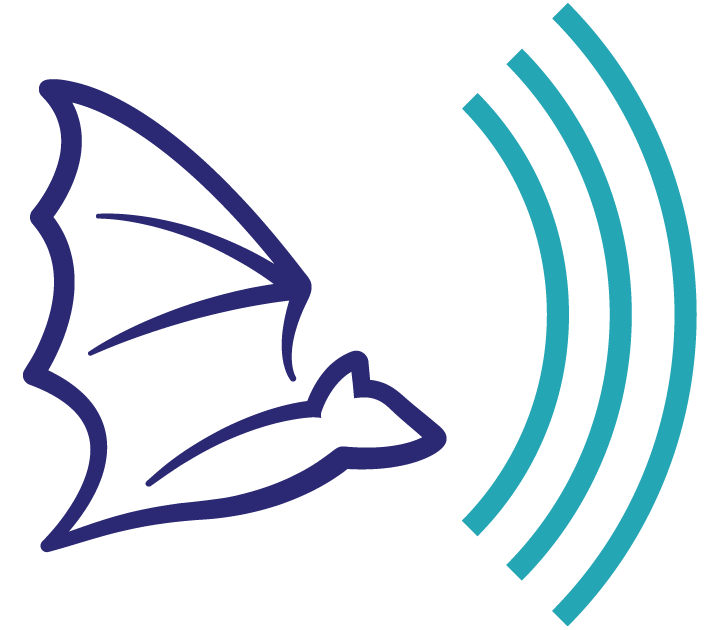 Bat Conservation International
Bat Conservation InternationalBCI is dedicated to the enduring protection of the world’s 1300+ species of bats and their habitats and creating a world in which bats and humans successfully coexist.
Bluebirds
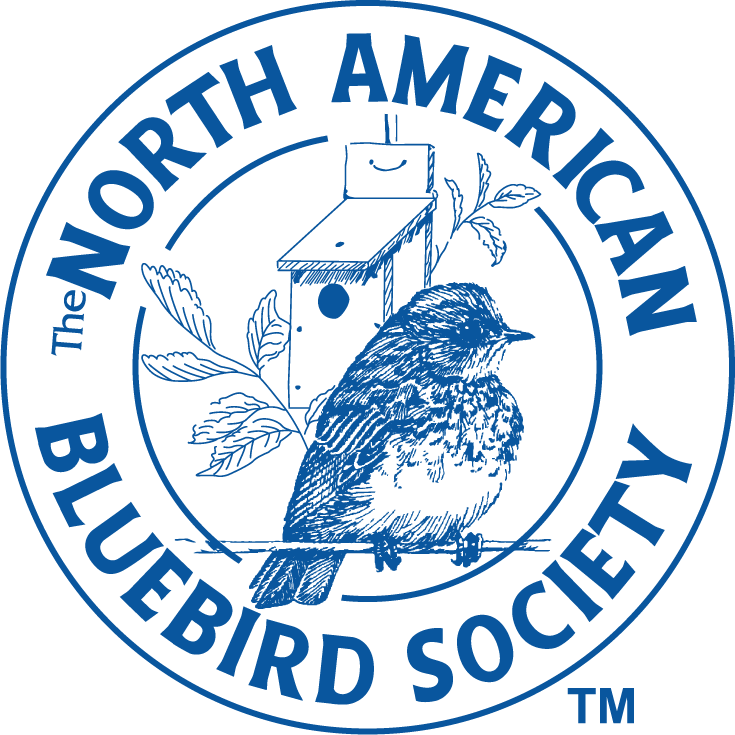 North American Bluebird Society
North American Bluebird SocietyThe North American Bluebird Society is a non-profit education, conservation, and research organization that promotes the recovery of bluebirds and other native cavity-nesting bird species in North America.
Educational fact sheets and plans for construction of many different types of bluebird nest boxes/accessories are free to download and print for your own use, or to use as handouts at bluebird programs.
- Getting started with bluebirds
- Nestbox plans
- Monitoring bluebird nest boxes
- Predator control
- House sparrow control (sparrow spookers, in-box traps, etc.)
 Sialis
SialisA resource for people interested in helping bluebirds and other native cavity-nesters survive and thrive.
- Advice for beginners
- Cleaning and monitoring nestboxes
- Managing house sparrows (sparrow spooker designs, etc.)
- Nest and egg identification
- List of various problems / solutions
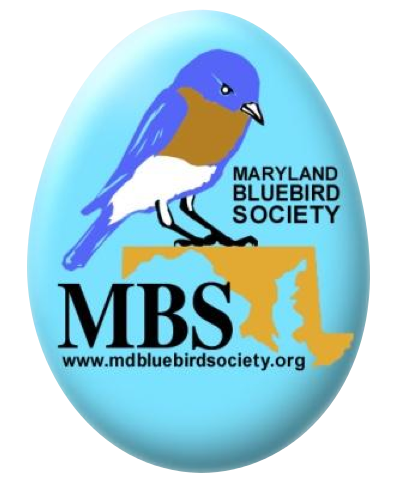 Maryland Bluebird Society
Maryland Bluebird SocietyThe mission of the Maryland Bluebird Society is to assist in monitoring and increasing the population of the Eastern Bluebird and other cavity nesting birds by educating and informing our members and the public about Bluebirds; support research on the Bluebird and its habitat; and cooperate with other organizations with similar conservation purposes.
Hummingbirds
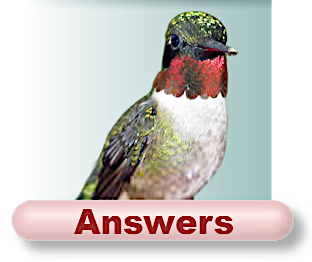 Hummingbirds.net
Hummingbirds.netA place to learn about attracting, watching, feeding, and studying the hummingbirds that breed in North America. Includes:
- Type of nectar to use – and those to avoid.
- Information about hummingbird gardens, feeders, migration, and answers to FAQ (lifespan, predators, rescue, etc.).
- Hummingbird species listed by state and province.
- Hummingbird events, such as field trips and hummingbird banding demonstrations.
- An archive* of migration maps through 2018 is available for reference. The maps show dates and locations of first-bird sightings for Ruby-throated Hummingbirds in the eastern half of the United States.
* For current hummingbird migration maps, visit
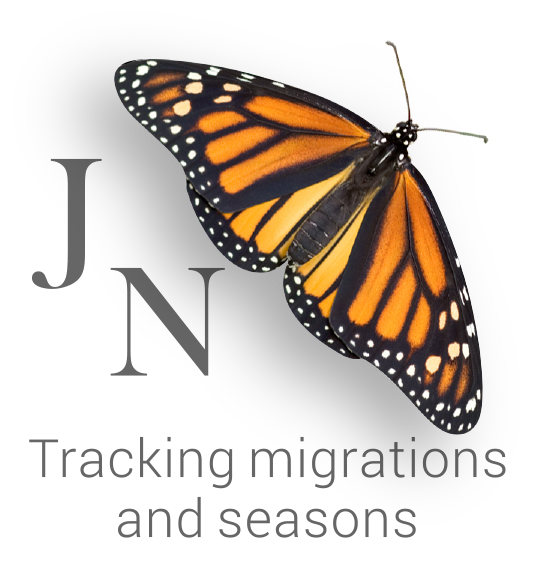 Journey North.
Journey North.
Purple Martins
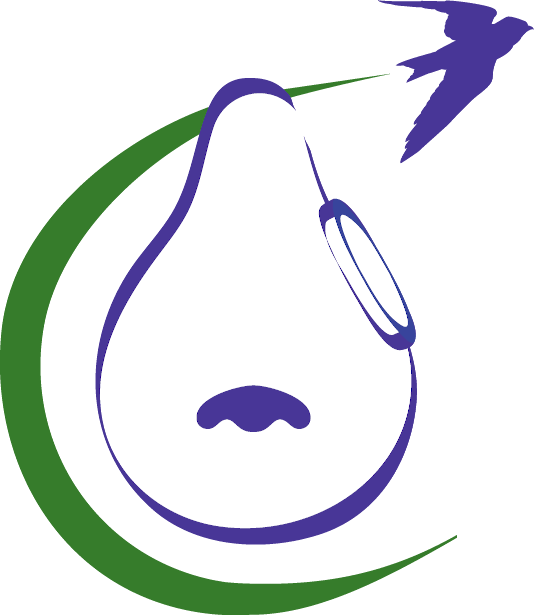 Purple Martin Conservation Association
Purple Martin Conservation AssociationThe PMCA is an international tax exempt, nonprofit organization dedicated to the conservation of the Purple Martin (Progne subis) through scientific research, state-of-the-art wildlife management techniques, and public education.
The PMCA serves as a centralized data-gathering and information source on the species, serving both the scientist and Purple Martin enthusiast. Our mission is educating martin enthusiasts in the proper techniques for managing this human-dependent species with information, for example:
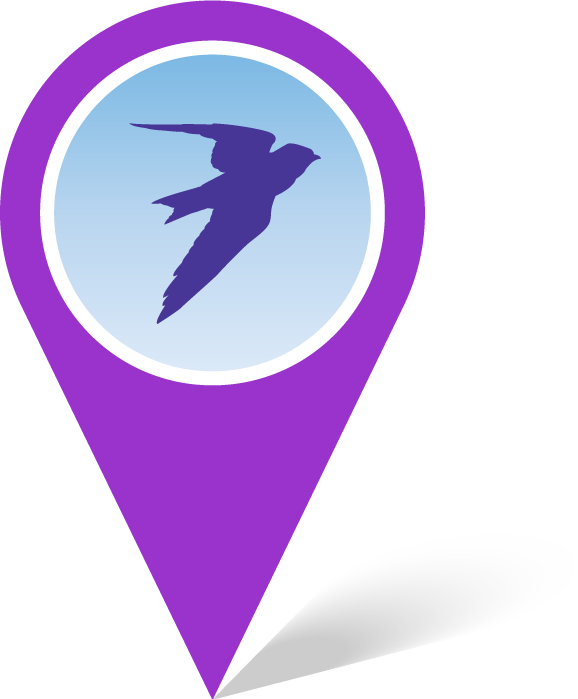
- Track the northward migration of Purple Martins and view reports from previous years.
- Answers to frequently asked questions about:
- Attracting Purple Martins
- Housing
- Monitoring
- Predators
- Adverse weather
- Competitors
- Information sheets for download
- DIY plans
Also, we’re the leaders in developing quality martin products, and we provide support for members to learn best practices to establish and maintain martin colonies.
Wildlife Rescue
Links to sites concerned with wildlife.
In this section:
- Rescue Guidelines – “What should I do?”
- “Think Twice Before Rescuing Young Wildlife” has information about baby birds, deer (fawns), foxes, rabbits, squirrels.
- Found a banded bird? Report a bird with a federal band or auxillary marker to the USGS Bird Banding Laboratory.
- Got bees? What to do when bees/hornets/wasps are a problem.
- Find Wildlife Rehabilitators for Orphaned or Injured Wildlife
- Columbia, MD — All Creatures Great and Small
- Woodstock, MD (near Ellicott City) — Frisky’s
- Search by Maryland county for a rehabilitator
- Report Wildlife Problems: Nuisance, Injured or Sick Wildlife
- Howard County Animal Control
- Wildlife Problems in Maryland
- Got bees? What to do when bees/hornets/wasps are a problem.
1. Rescue Guidelines – “What should I do?”
- Think Twice Before Rescuing Young Wildlife
 Unless the animal appears injured or in distress, there is no need to rescue them. Signs that a wild animal needs help:
Unless the animal appears injured or in distress, there is no need to rescue them. Signs that a wild animal needs help:- Evidence of bleeding.
- An apparent or obvious broken limb.
- A featherless or nearly featherless bird on the ground.
- A dead parent nearby.
- Audible distress calls (fawn crying, etc) given over a prolonged period of time.
Read about species-specific signs for baby birds, deer (fawns), foxes, rabbits, and squirrels.
- Found a banded bird? Report a banded bird to the USGS Bird Banding Laboratory
 The Bird Banding Laboratory (BBL) is an integrated scientific program established in 1920 supporting the collection, archiving, management and dissemination of information from banded and marked birds in North America. This information is used to monitor the status and trends of resident and migratory bird populations.
The Bird Banding Laboratory (BBL) is an integrated scientific program established in 1920 supporting the collection, archiving, management and dissemination of information from banded and marked birds in North America. This information is used to monitor the status and trends of resident and migratory bird populations.Because birds are good indicators of the health of the environment, the status and trends of bird populations are critical for identifying and understanding many ecological issues and for developing effective science, management and conservation practices.
- Report a bird with a federal band or auxillary marker
- ReportBand.gov is easy to remember and will redirect you to the same page.
- Got bees? What to do when bees/hornets/wasps are a problem.
Howard County Beekeepers Association – Got Bees? First, use the
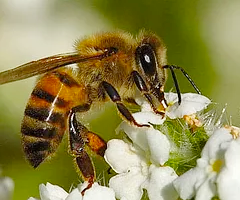 identification guide to determine the type of insect (bee/hornet/wasp).
identification guide to determine the type of insect (bee/hornet/wasp).- View photos and descriptions.
- Click on the arrow beside the photo for a description and photo of the nest — and what to do if you have them in or around your home.
If the insects are honey bees, one of the beekeepers on the HCBA list should be able to help.
2. Find Wildlife Rehabilitators for Orphaned or Injured Wildlife
- Columbia, Maryland
 All Creatures Great and Small Wildlife Center
All Creatures Great and Small Wildlife Center- By appointment only: (410) 740-5096
“Please do not drop off an animal until we have spoken to each other on the phone and arranged a time for you to arrive. To do otherwise could (and has in the past) place the animal in mortal danger.”
- See helpful rescue guidelines from All Creatures Great and Small Wildlife Center.
A home-based, all volunteer, non-profit organization founded by Judy Holzman, a state and federally licensed master wildlife rehabilitator, that cares for small mammals and birds that are ill, injured, or orphaned.
- By appointment only: (410) 740-5096
- Woodstock, Maryland (near Ellicott City)
 Frisky’s Wildlife and Primate Sanctuary
Frisky’s Wildlife and Primate Sanctuary- 8am to 8pm only
- (410) 418-8899
- See Rehabilitating Wild Animals – Tips on Transporting Injured or Orphaned Wildlife (there’s a summary at the end of the page).
A non-profit, state-licensed, wildlife rehabilitation center that takes in injured, orphaned, abandoned, or displaced wildlife.
- Search by Maryland county for a licensed wildlife rehabilitator.
 Maryland Department of Natural Resources: Find a Wildlife Rehabilitator
Maryland Department of Natural Resources: Find a Wildlife RehabilitatorIn Maryland, there is a large network of volunteer Wildlife Rehabilitators who take care of orphaned, sick or injured wildlife until they can be released safely back to the wild.
If you should come across wild animals that appear to be sick or injured, you may search by County to locate a licensed Wildlife Rehabilitators in your area who may be able to help, or you may call Wildlife Services toll-free to get this information at:
- 1 (877) 463-6497
Operators are available from 8:00 am to 4:30 pm, Monday through Friday, except State holidays.
3. Report Wildlife Problems: Nuisance, Injured or Sick Wildlife
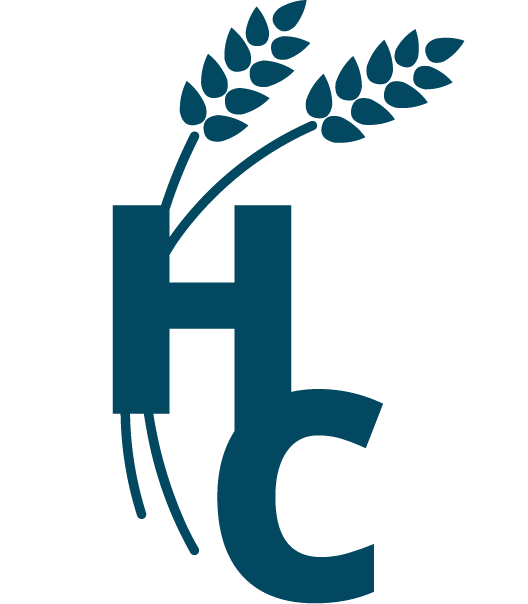 Howard County Animal Control
Howard County Animal ControlHoward County Animal Control investigates animal cruelty cases, rescues endangered animals, accepts unwanted pets, administers a pet adoption program, conducts humane education programs and operates the county’s animal shelter.
Animal Control also responds for injured or deceased deer on county roadways and on private property, if the deer is within 250 feet of a dwelling.
Other information includes:
- Animal license application / renewal / look-up
- Adopt a pet
- Lost or missing pets / found pets
- Report loose/aggressive animals, neglect, or nuisance barking
- Request rabies case reports
- and more ...
During business hours, residents should call:
- (410) 313-2780
Or for after-hours, animal-related emergencies:
- (410) 313-2929
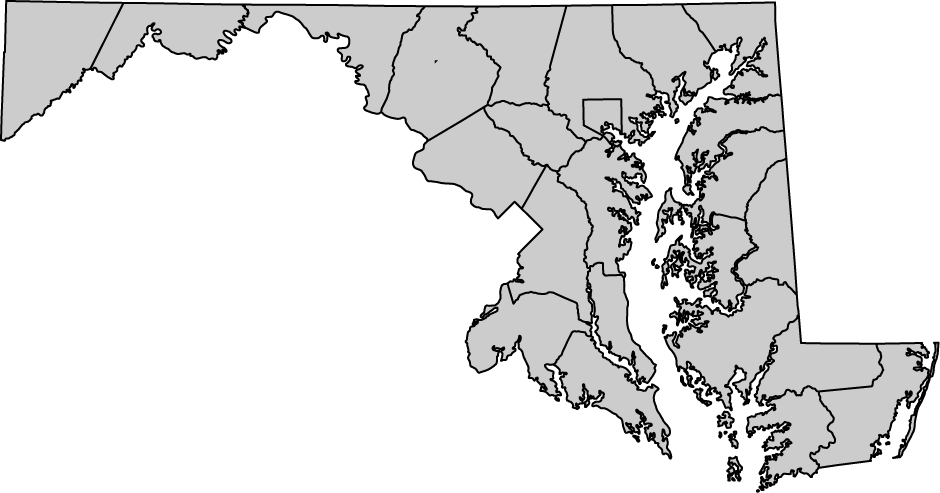 Wildlife Problems in Maryland
Wildlife Problems in Maryland- Report nuisance, injured or sick wildlife to the MD Department of Natural Resources (DNR).
Find information on:
- bats in houses
- black bears
- chimney swifts
- deer damage
- deer fawn FAQs
- and more ...
Sometimes, it’s necessary to learn how to prevent frequent visits by wildlife to your home or neighborhood. It may even become necessary to remove Nuisance Wildlife from your property.
To find out about safe and legal ways to deal with these problem animals or to locate individuals or companies who are licensed by the Wildlife & Heritage Service to handle wildlife complaints, use the above link, or you may call Wildlife Services toll-free to get this information at:
- 1 (877) 463-6497
Operators are available from 8:00 am to 4:30 pm, Monday through Friday, except State holidays.
 Got Bees? What to do when bees/hornets/wasps are a problem.
Got Bees? What to do when bees/hornets/wasps are a problem.
-
First, use the
 identification guide to determine the type of insect (bee/hornet/wasp).
identification guide to determine the type of insect (bee/hornet/wasp).- View photos and descriptions.
- Click on the arrow beside the photo for a description and photo of the nest — and what to do if you have them in or around your home.
If the insects are honey bees, one of the beekeepers on the HCBA list should be able to help.
Nature
Links to sites about nature in general.
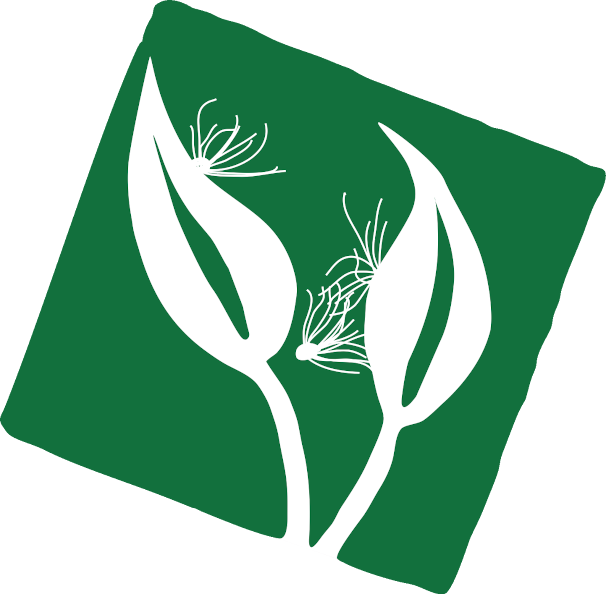 Howard County Conservancy
Howard County ConservancyThe mission of the Howard County Conservancy is to protect the open spaces, rural environment, and agricultural resources of Howard County; to promote the preservation and improvement of the natural environment and historic sites; and to engage in and promote education and the scientific study of our agricultural resources and the natural environment.
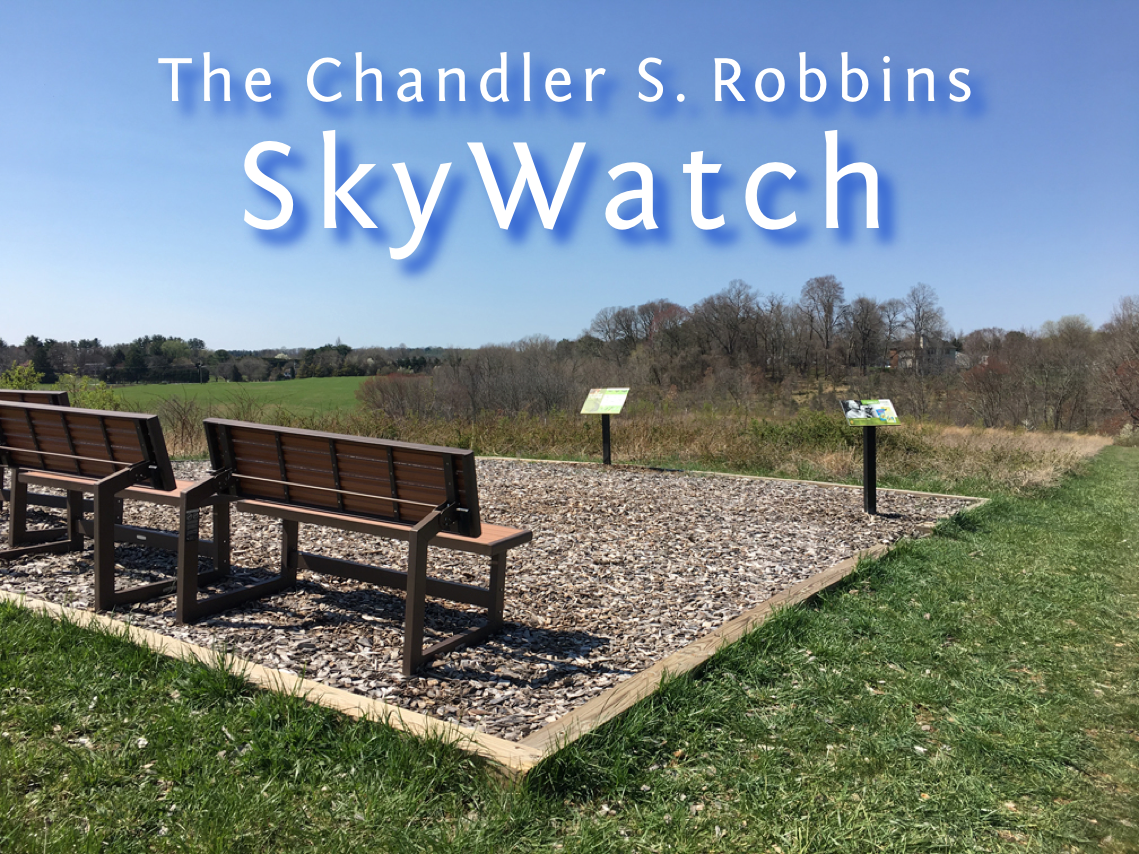
The Chandler S. Robbins Skywatch (Photo by Nancy McAllister)Of specific interest to birders is the Chandler S. Robbins SkyWatch, a joint initiative of the Howard County Bird Club and the Howard County Conservancy. It’s at the conservancy’s Mount Pleasant Farm location along the grassland loop trail, a short distance north of the Montjoy Barn.
With a 360° view of the horizon, this is a great place to watch the migration of hawks, kestrels, osprey, eagles, and even non-raptor migrants like swallows, warblers, hummingbirds, and monarchs.
Read about Howard County ornithologist Chandler Robbins:
- Chandler Robbins
- Dr. Chandler S. Robbins Memorial Endowment – “To Honor His Legacy and Love of Birds”
- In Memoriam: Chandler S. Robbins, July 17, 1918 – March 20, 2017
 Maryland Department of Natural Resources
Maryland Department of Natural ResourcesThe Department of Natural Resources leads Maryland in securing a sustainable future for our environment, society, and economy by preserving, protecting, restoring, and enhancing the State’s natural resources.
- Maryland Plants and Wildlife
- Maryland’s Wildlife Species
- Birds
- Reptiles and amphibians
- Mammals
- Insects and invertebrates
- Rare, threatened, and endangered animals
- Invasive and exotic species
- Maryland’s Wildlife Species
- Maryland Plants and Wildlife
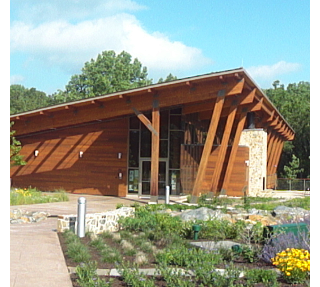 Robinson Nature Center
Robinson Nature Center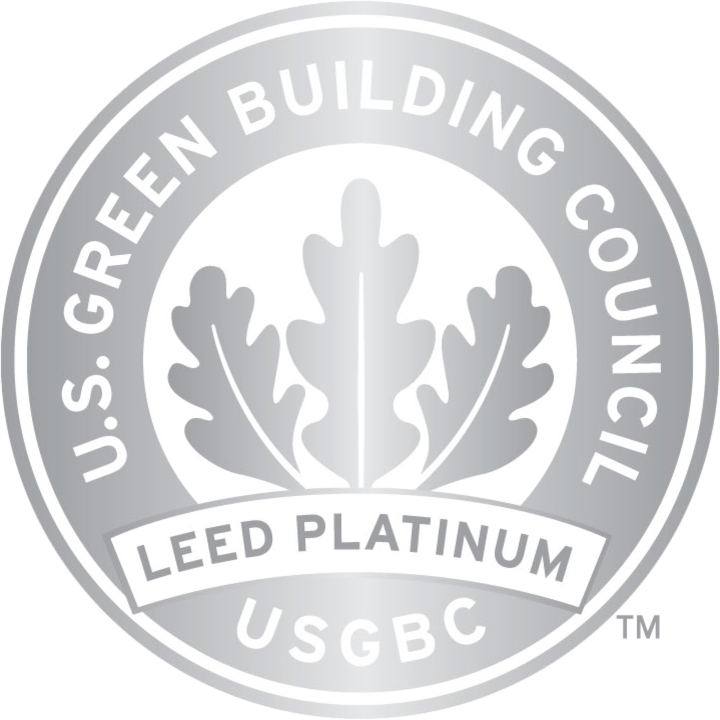 We’re a unique LEED* Platinum-certified nature education facility situated on 18 acres of land adjacent to the Middle Patuxent Environmental Area. We offer educational programs, field trips, birthday parties, home school, scout programs, and more.
We’re a unique LEED* Platinum-certified nature education facility situated on 18 acres of land adjacent to the Middle Patuxent Environmental Area. We offer educational programs, field trips, birthday parties, home school, scout programs, and more.This Center was made a reality through the foresight and generosity of James and Anne Robinson. The Center continues to be partially supported by the James & Anne Robinson Foundation and is owned and operated by the Howard County Department of Recreation & Parks.
* Leadership in Energy and Environmental Design (LEED) is an internationally-recognized, consensus-based green building certification system. Buildings are evaluated and awarded LEED certification at one of four levels: Certified, Silver, Gold and Platinum, with very few buildings reaching the Platinum level. Robinson Nature Center was certified as LEED Platinum in February 2012.
 Journey North
Journey North“Tracking Migrations and Seasons”
Journey North is one of North America’s premiere citizen science programs for people of all ages and includes families, teachers, schools, nature centers, professional scientists, and novices.
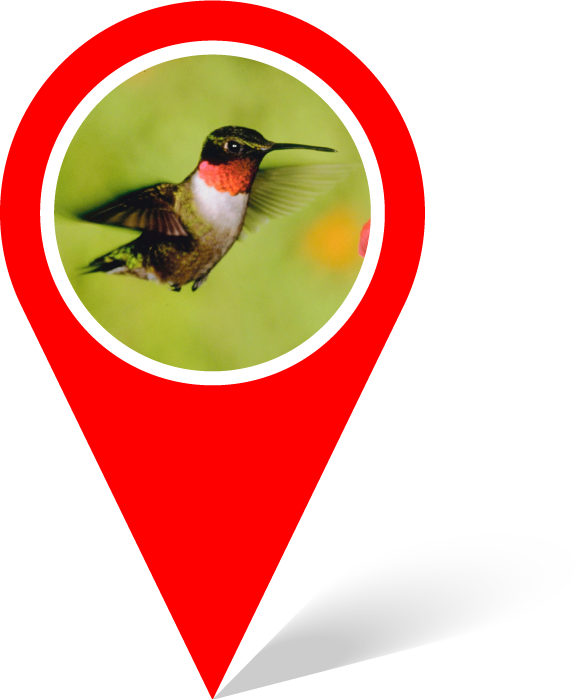 Journey North provides an easy entry point to citizen science, with simple protocols, strong online support, and immediate results.
Journey North provides an easy entry point to citizen science, with simple protocols, strong online support, and immediate results.Reported sightings of plants and animals (for example, first sightings of hummingbirds during spring migration) are mapped in real-time as waves of migrations and changing seasons move across the continent. People report sightings from the field, view maps, take pictures, and leave comments.
You can participate – and see the results!
 Howard County Beekeepers Association
Howard County Beekeepers AssociationOur purpose is to promote honey beekeeping in Howard County, Maryland, by providing a forum in which current honey beekeepers may become more knowledgeable of best practices, and the public can become more accurately informed on the benefits of honey bees.
- Find workshops, courses, resources, and FAQ to help responsible beekeepers make important decisions.
- Got bees? If the insects are honey bees, one of our beekeepers should be able to help. But before you pick up the phone, use our bee/hornet/wasp identification guide so you’ll be able to take the right steps right away.
- Find local honey bee products (honey, pollen, wax, beeswax/honey soap, candles, lip balm, lotion, etc.) for sale by HCBA members.
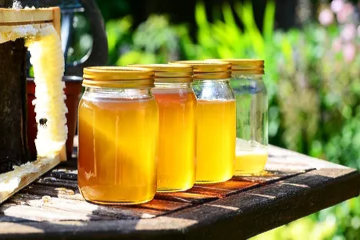
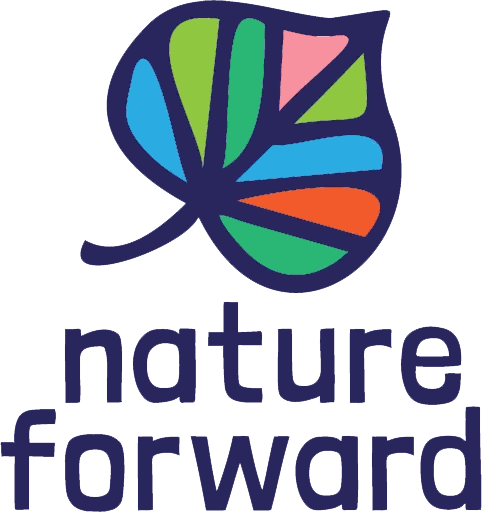 Nature Forward
Nature Forward“Connecting people and nature in the Capital Region”
Nature Forward inspires residents of the greater Washington, DC, region to appreciate, understand, and protect their natural environment through outdoor experiences, education, and advocacy.
Nature Forward is headquartered in the Woodend Nature Sanctuary, a peaceful 40-acre oasis for experienced nature lovers and new explorers! Come enjoy the serenity of our wildflower meadows, walk our meandering woodland trails, visit our native plant gardens, and explore the aquatic life of our pond.
Woodend Nature Sanctuary is free and open to the public every day of the year from dawn to dusk.
Also, don’t miss the wonderful selection in our Woodend Nature Shop, housed in our historic Georgian mansion.
 Eastern Ecological Science Center (EESC)
Eastern Ecological Science Center (EESC)In 2020, the USGS Patuxent Wildlife Research Center (PWRC) and Leetown Science Center (LSC) merged to create the Eastern Ecological Science Center (EESC). Our goals are to align our scientific capabilities with the most pressing conservation and management challenges; establish an engaged workforce that fosters high relationship trust with employees, partners and the public.
We conduct several national programs, including:
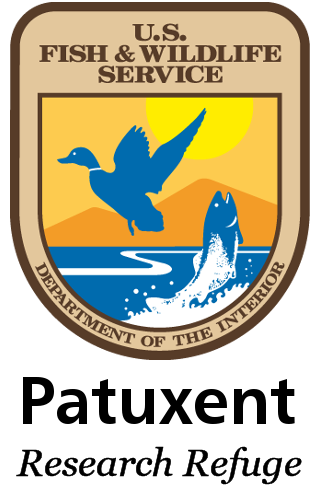 Patuxent Research Refuge
Patuxent Research RefugeEstablished in 1936 by executive order of President Franklin D. Roosevelt, the Patuxent Research Refuge is the nation’s only national wildlife refuge established to support wildlife research.
There are two areas of the refuge open to visitation. Each area has different operating hours and recreational opportunities. Please note that no food or drink is available on the refuge.
- South Tract hosts five miles of walking trails, two scenic lakes, and the National Wildlife Visitor Center. South Tract’s grounds are open from sunrise to sunset. Fishing on Cash Lake and hunting are available seasonally with a permit/license.
- North Tract offers a Visitor Information Station and 15 miles of trails for walking, biking and horseback riding. With fewer visitors than South Tract, it offers a quiet atmosphere for those seeking respite from the busy world. Due to active nearby gun ranges and the risk of unexploded ordnance, visitors must stay on roads and trails. North Tract closes for federal holidays and occasionally for scheduled hunts.
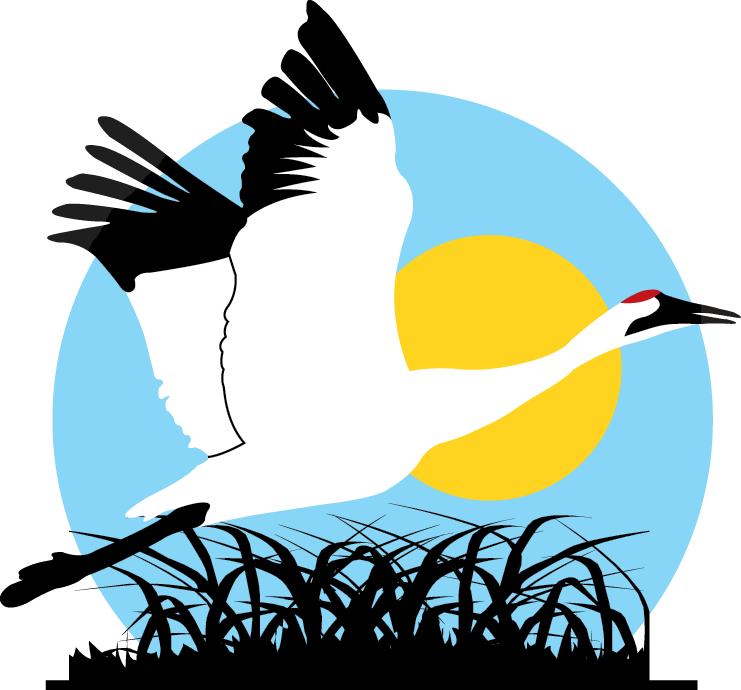 Friends of Patuxent
Friends of PatuxentFriends of Patuxent (Friends), a tax-exempt, non-profit 501(c)(3) organization, is a group of dedicated and enthusiastic volunteers who share a passion, and work hard to support and promote the US Fish and Wildlife Service’s Patuxent Research Refuge and the US Geological Survey’s Eastern Ecological Science Center (EESC) in Laurel, Maryland.
The National Wildlife Visitor Center was built and opened in 1994 with support from Friends, Congress, local governments, organizations, and private donors, and Friends operates its Wildlife Images Bookstore and Nature Shop.
Friends also holds seasonal fundraisers at North or South Tract as a means of generating funds to support the Refuge and the EESC.
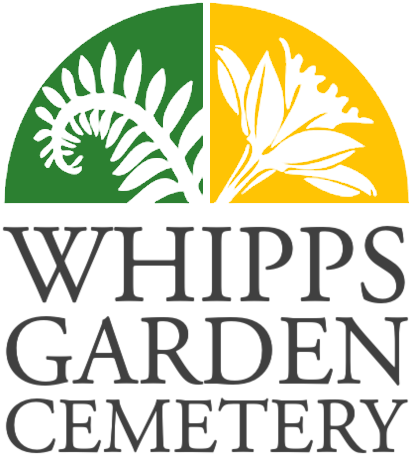 Whipps Garden Cemetery
Whipps Garden CemeteryAt the Whipps Cemetery Park, Howard County Master Gardeners and community volunteers plant and maintain heritage and native species in a variety of different settings, interspersed by pathways, benches, and around the tombstones. The plants are typical of those grown in Maryland gardens of the 1800s.
The cemetery is maintained entirely by volunteers, primarily the University of Maryland Extension Howard County Master Gardeners. It’s supported by donations and fund-raisers, for example:
- Annual Plant Sale – featuring many hard-to-find perennials, registered daylilies, and many other plants donated by the Howard County Master Gardeners.
- Daffodil Day – featuring horticultural talks by Master Gardeners in Whipps’ Woodland Theatre, garden tours, and potted bulb sales.
 University of Maryland Extension
University of Maryland ExtensionUniversity of Maryland Extension (UME) educational programs and problem-solving assistance are available to citizens and are based on the research and experience of land grant universities such as the University of Maryland, College Park.
Have a question? You can Ask an Expert.
Programs:
- 4-H Youth Development
- Family & Consumer Sciences
- Agriculture & Food Systems
- Environment & Natural Resources
- Home & Garden Information Center (HGIC)

- Master Gardener (MG) Program
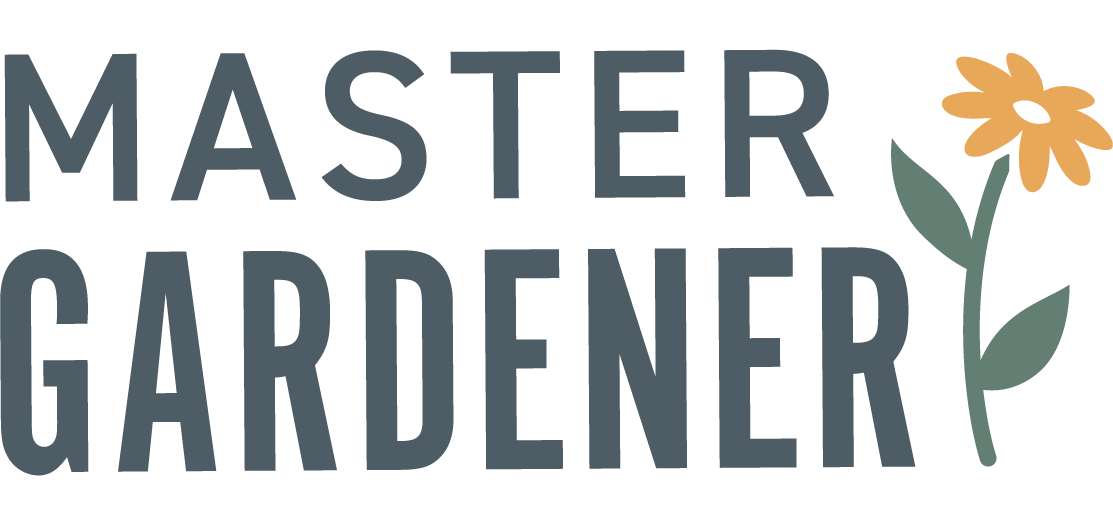
Resources:
- 4-H & Youth Resources
- Agribusiness Management
- Animal Agriculture
- Environment & Energy
- Food & Nutrition
- Health & Well-Being
- Natural Resources
- Pests
- Plant Agriculture
- Yard & Garden
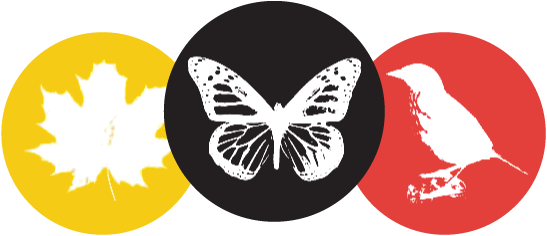 Maryland Biodiversity Project
Maryland Biodiversity ProjectThe Maryland Biodiversity Project (MBP) is a 501(c)(3) non-profit organization focused on cataloging the living things of Maryland. We promote conservation, science, and education by helping to build a vibrant nature study community.
The project was started in June 2012 by Bill Hubick and Jim Brighton. The incredible MBP community has cataloged tens of thousands of species, including many with photographs, and features the work of thousands of naturalists and photographers.
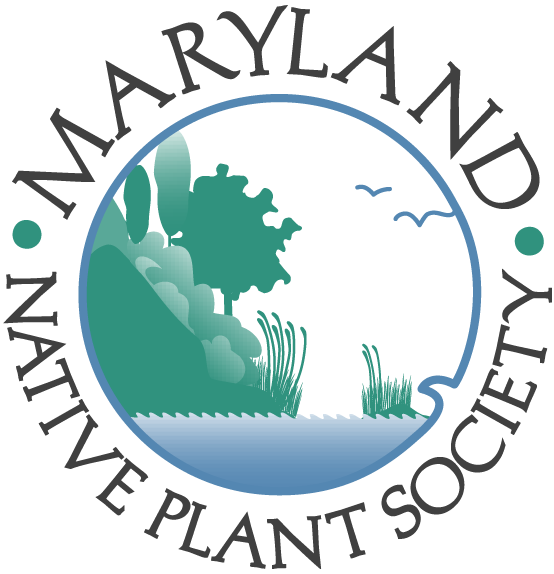 Maryland Native Plant Society
Maryland Native Plant SocietyThe Maryland Native Plant Society’s mission is to promote awareness, appreciation, and conservation of Maryland’s native plants and their habitats. We pursue our mission through education, research, advocacy, and service activities.
 Natural History Society of Maryland
Natural History Society of Maryland“Exploring & Preserving Maryland’s Natural Treasures”
We offer many programs – from social events to advanced courses.
We conserve our natural history collections, educate citizens, and inspire youth to study the natural sciences. We host collections of plants, animals, fossils, and minerals, dating back to the early 1800s; and are developing a new natural history museum.
Our goal? That every Marylander learns to observe, identify, and appreciate the natural world that exists in our state.
Are you a naturalist? Do you:
- Collect rocks and shells?
- Notice the phases of the moon?
- Compare the shapes and colors of autumn leaves?
- Photograph nature on hikes?
- Watch birds at a bird feeder?
- Write observations in a nature journal?
- Have a favorite tree in your backyard?
- Read nature writing (Henry David Thoreau, John Muir, Rachel Carson)?
- Listen to frog calls at night?
- Sketch wildlife and flowers?
- Follow animal tracks in the snow?
- Download apps to identify birds or plants?
- Observe a ladybug as it lands on your finger?
These are just a handful of the characteristics of a naturalist. Chances are, if you answered “yes” to any of these, you have the makings of a naturalist!
We’re an organization that shares these interests, too!
 Horseshoe Crab Recovery Coalition
Horseshoe Crab Recovery CoalitionThe dramatic decrease in horseshoe crab egg availability has caused a shortage in available eggs for foraging species (e.g., birds and fish) and has resulted in a crash of their populations as well.
The Red Knot shorebird uses the Delaware Bay as a stopover to feed during their migration from the southern tip of South America to the Canadian Artic (more than 9,000 miles [14,000 km]). During their week-long feeding frenzy, they eat enough to double their body weight so they have sufficient fuel to complete their northbound journey.
Poor egg availability on the Delaware Bay beaches leaves emaciated birds unable to complete the last stage of their long migration, increasing the risk of death during their journey, or failure to breed once they reach their destination.
Recovery of the horseshoe crab population is possible!

